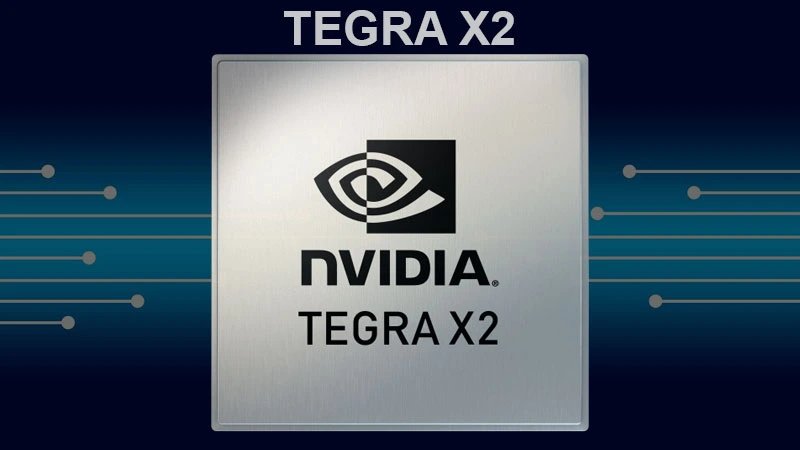Tegra X2 is an automotive processor from Nvidia, announced in August 2016. Devices Nvidia Jetson TX2. Later, reached or came out to Dominator211 on Oct 6, 2017.
Tegra integrates an ARM architecture central processing unit (CPU), graphics processing unit (GPU), southbridge, northbridge, and memory controller in one package. Early Tegra SoCs are completely designed as well-organized multimedia processors. The Tegra-line progressed to highlight performance for gaming and machine learning applications in the absence of power efficiency. Prior, initiating a drastic shift in direction towards sources that provide vehicular automation ranges applied the “Drive” brand name. This can happen on reference boards and their semiconductors; and along the “Jetson” brand name for boards adequate for AI applications. Eventually, this can be done within, e.g., robots or drones, and for various smart high-level automation resolutions.
This Pascal architecture desktop card depends on a 16 nm manufacturing process and chiefly targets gamers.
Compatibility
This is well-designed with an integrated video card. You don’t need any additional power connector to operate. Eventually, it has a power consumption ranging from 15 watts.
General info
For Architecture, it has Pascal (2016−2021), and the GPU code name is defined withGP10B
Desktop is meant to be a Market segment and was released on August 2016 with a price range of $936.
Technical specs
Tegra X2 shows the general performance parameters efficiently for the following, like several shaders, GPU base clock, manufacturing process, texturing, and calculation speed. Whereas these parameters indirectly show the Tegra X2’s performance. At the same time, it doesn’t show any precise assessment that should be considered as a benchmark and gaming test analysis.
Full Specifications
Tegra X2 Pascal GPU graphics card depends upon the desktop sector; it consists of 1 execution unit and 256 shading units, and its maximum frequency is 1.5GHz.
- Pipelines / CUDA cores>256>of 18432 (AD102)
- Core clock speed >854 MHz >of 2610 (Radeon RX 6500 XT)
- Boost clock speed >1465 MHz of 3599 (Radeon RX 7990 XTX)
- Manufacturing process technology >16 nm >of 4 (GeForce RTX 4080 Ti)
- Thermal design power (TDP) >15 Watt >of 900 (Tesla S2050)
- Texture fill rate >23.44 >of 969.9 (H100 SXM5 96 GB)
Compatibility
Information on Tegra X2’s compatibility is highly admirable, which can be easily configured through the computer components. Eventually, you can also try it on desktop graphics cards with an interface and bus (motherboard compatibility) and added power connectors (power supply compatibility).
Hence, it is enabled with IGP Interface with IGP width.
Memory
You can expect efficient parameters of the memory installed on Tegra X2.
Note: The GPUs are integrated into processors with dedicated memory and utilize only the shared part of system RAM.
Memory type System Shared
- Maximum RAM amount>System Shared >of 128 (Radeon Instinct MI250X)
- Memory bus width >System Shared >of 8192 (Radeon Instinct MI250X)
- Memory clock speed >System Shared >of 22400 (GeForce RTX 4080)
Other specifications:
TMUs = texture mapping units
This unit consists of a physical processor separated from the main graphics processing units. Hence, it can support distorting a bitmap image and even supports resizing, rotating it, and keeping it as a texture onto a plane of an exact 3D model.
ROPs = render output units
The alternative name of this unit is the raster operations pipeline. The hardware component will take the pixel and texel information and try to process it via vector and matrix operations. As a result, you will get a depth value or a final pixel. This enables you to control antialiasing by merging numerous samples into one pixel.
SM = streaming multiprocessor
These processors are implied in Kepler’s power efficiency if the GPU is utilized at one unified clock speed.
FAQ’s
Does NVIDIA provide access to the Tegra 2 Technical Reference Manual?
Internal functional units consist of video & graphics hardware acceleration. These are controlled by NVIDIA-given software and which is not documented. NVIDIA only delivers access to the Tegra 2 Technical Reference Manual to listed developers.
What technology is the Tegra X2 made from?
Nvidia's Tegra X2 (codenamed "Parker ") is featured and owned by Nvidia's own custom general-purpose ARMv8-compatible core Denver 2, codenamed Pascal graphics processing core. Eventually added with GPGPU support. The chips are manufactured by using FinFET process technology with TSMC's 16 nm FinFET+ manufacturing process.
Does Nvidia support Tegra 2?
Nvidia chiefly supports Android on Tegra 2, but striking other ARM-supporting operating systems, which is possible on devices & eventually, the bootloader is accessible. Tegra 2 enabled with Ubuntu GNU/Linux distribution can even be announced on the Nvidia developer forum.
